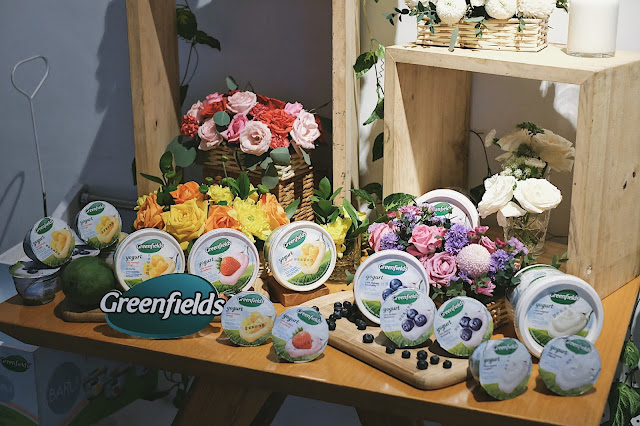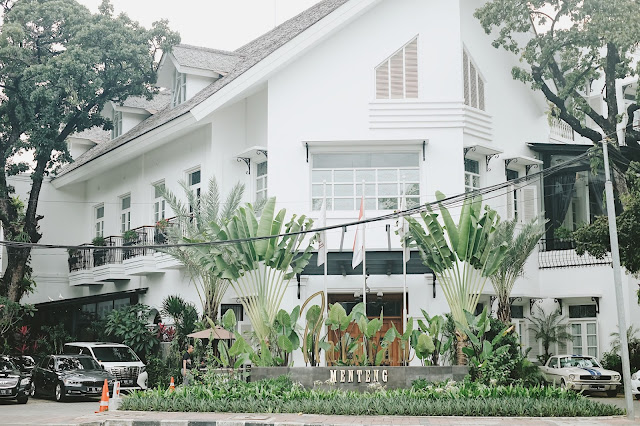[ENGLISH TEA HERITAGE] BRITISH COUNCIL INDONESIA FOUNDATION
Flashing back the moment I had at Raffles Hotel. Many of you asked me to tell some story about my activity with British Council. I know this is a bit too late but I'm sure you guys won't skip my blog as I have an information for you. So, keep scrolling.
 |
| Sneak Peek |
Yeah, it's been two weeks ago (Sept 19, 2017) I got chance attending a mini event held by British Council at Arts Cafe by Raffles Hotel. They shared about the culture, history, and etiquette of the popular "English Tea"
 |
| Opening Speech |
 |
British Council Introduction
|
About British Council Indonesia Foundation
The British Council is the United Kingdom's International Organization for cultural relations and educational opportunities that aims to create friendly knowledge and understanding between the people of the UK and other countries by making a positive contribution to the UK through creating opportunities, building connections and engendering trust. The British Council have delivered English lessons in over 80 teaching centers and partner premises in more than 110 countries, reinforcing the UK's position as the home of the English language. Last year, British Council have helped more than 500,000 improve their English skills and build their confidence.
In October 2013, The British Council expanded their reach to Indonesian public by establishing British Council Indonesia Foundation as part of British Council Holdings to provide the best English language learning opportunities in Jakarta. myClass is an English learning product from British Council Indonesia Foundation that delivers quality 100% face-to-face English courses for professionals or students age 17+ in great class environment delivered by certified international teachers and learning flexibility to suit learner's need.
As I pointed as HOST on that event, I got chance to sit together with Board member of the British Chamber of Commerce in Indonesia, Rebecca Razavi that also shares about English Tea. We talked so much about anything and absolutely in English. As always, I have problems in speaking skill. There's many idea inside my brain, but the idea doesn't want to come out in English language. So I talked nervously with Rebecca. I was afraid making mistakes when I spoke English.
I realized that I got to practice a lot. As a food-blogger, I have travelled from restaurant to another restaurant and I have met many people (Indonesian) nowadays using English on their whole conversations. So, I consider to join myClass from British Council Indonesia Foundation. Before we go too far, let me show you where myClass is located
 |
| myClass |
 |
| myClass |
 |
| Book Corner |
 |
| Class Room |
 |
| myClass at Lotte Shopping Avenue |
Now, lets head to the main event.
 |
| Rebecca's Turn |
First of all, she talked about the definition of "Afternoon Tea" She said that Afternoon Tea is a tea-related ritual, introduced in Britain in the early 1840s. It evolved as a mini meal to stem the hunger and anticipation of an evening meal at 8 PM.
Don't you realized that we heard so much about afternoon tea but have you known about "High Tea"? is it the same with afternoon tea? I'm sure some of you don't know what's the different between them. Lets ask Rebecca about this
 |
| Rebecca Razavi |
Afternoon Tea
Traditionally sandwiches, scones, and a selection of cakes, served with tea
High Tea
Refers to the main meal of the day for the working class. It originated during the industrial Revolution for workers who returned home after a long hard day of physical labour looking forward to a hot, hearty meal. High tea may be called "high" because it was eaten on a high table rather than a low table for tea.
 |
| Afternoon Tea |
History
1. 2737 BC
It is said that tea drinking started in China
2. 1662
It was then brought to England by Chaterine of Braganza from Portugal who married Charles II. She became known as the tea-drinking queen
3. 1840s
Taking tea in the afternoon developed into a new social thanks to Anna, the 7th Duchess of Bedford who complained of "having sinking feeling" because the gap between lunch and dinner which is usually served at 8 PM is too long. Her solution was a pot a tea and a light snack, taken privately in her boudoir during the afternoon
Tea was generally consumed within a lady's closet or bedchamber and for a mainly female gathering of the English aristrocacy. When the ladies took the afternoon tea ritual outside it encouraged the lords and men of the house to take part in this fabulous activity
4. 1920s
Marked height of the craze, complete with lots of guests, pageantry servants, silver teapots, fine linens, musicians, elegant teacups, and the best tea money could buy
 |
| Flat Lay |
Afternoon Tea Etiquette
So what about the etiquette in Afternoon Tea. And you know what, that etiquette is exist. Rebecca told us that We do not have to wear fancy ball gown or tux. These days, smart casual, however, no sportswear or trainers (sneakers)
Do not place items that not a part of the tea service, such as keys, sunglasses, or phones, on the table
Spread out the napkin on your lap, sit up straight and let's drink tea
Someone is nominated or nominates themselves as the pourer. It is correct to pour each cup of tea by one and to pass each cup to the recipient before pouring the next. Never pour lots and then hand them out.
The tea strainer should be used if provided by pouring the tea through it over the cup to catch any loose leaves. It is placed back in its rest or stand once pouring is finished
Additions Milk and sugar or lemon are passed around and everyone adds to their liking.
 |
| Etiquette |
 |
| Etiquette |
 |
| Etiquette |
Now, this is my favourite part. Eating CAKE. But again, it also has etiquette like below
An easy and elegant way to present each course is on a tiered stand. The first course eaten is from the bottom tier and we work our way up. The first tier (bottom) is reserved for the finger sandwiches. The second tier (middle) holds the scones. The third tier (top) is for the small pasties, tarts and other bite-size sweet desserts. Take a look at this picture as your guide
 |
| Tiered Stand |
From Up to Down :
Pastries, tarts, bite-size sweet desserts - Scones - Finger Sandwich
Tea sandwiches must have their crusts cut off and presented either in the shape of triangles, rectangles or as the royal household prefer - in small squares. They are finger sandwiches and are eaten with the hands, not cutlery.
 |
| Bite-Size |
 |
| Dessert |
 |
| Cake |
Scones are broken, not cut. A good scone will easily break in two from the middle. Do not, sandwich the two halves back together.
Last but not least
 |
| Chocolate Balls |
That's overall my last activity there. To tell you the truth, this was my first event that similar to in class learning. Although it was just a casual event, but I felt like a teaching session like I had when I was in school and need a concentration to understand what the mentor said. At least I can explain about the differences between afternoon tea and high tea if someone ask me.
Thank you British Council Indonesia Foundation for this event.
 |
| Let's Drink Tea |
For those who want to know about British Council Indonesia Foundation & myClass :
1. British Council Indonesia Foundation Official Website : http://www.britishcouncilfoundation.id
2. Information about myClass for adult : http://www.britishcouncilfundation.id/english/adults?utm_source=hungryfever&utm_medium=blog&utm_campaign=ID_AL_FoodBloggers_MF&utm_content=al-course
3. Direct link for placement test : http:// www.britihcouncil.id/english/register/placement-test?utm_source=hungryfever&utm_medium=blog&utm_campaign=ID_AL_FoodBloggers_BF&utm_content=al-placement-test
4. Instagram : @idlearnengish
5. Discount code (myClassWithHungryFever) for my blog reader and my Instagram follower. Show them with screenshoot on Instagram or on the blog and get discount 10% + extra lessons up to 6 class.
6. myClass is designed for adult
7. Location :


Comments
Post a Comment